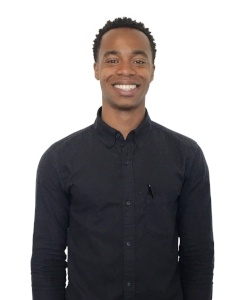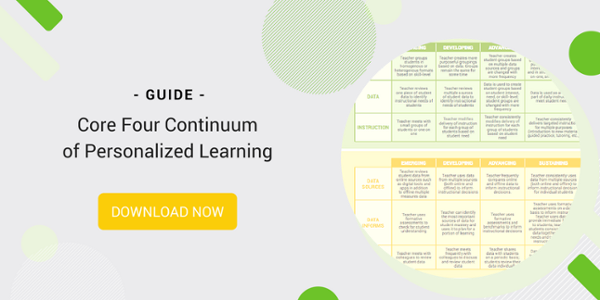
The New “PD”: How Shifting from Professional to Personalized Development Will Improve Your Workshops
Personalized Learning | Professional Development | Innovative Leadership | Teacher Retention
August is an important month for school leaders; it is the last opportunity to reflect, recharge, and realign on your personal and shared goals before the school year officially kicks off. While there is no debate that we all want better student outcomes, many discussions occur during this period regarding the best methods to employ. One of the most important systems to take into account is how your leadership team will structure the professional development (PD) curriculum and options that are presented to your staff this upcoming school year. As educators, we understand the importance of modeling our thinking and actions, and this is no different when it comes to PD. During my time as a school leader, it was important for me to acknowledge that if I was going to demand that our teachers be empathetic and innovative in their implementation of personalized learning, then we as school leaders must provide those same personalized qualities in the development opportunities we offer.
We all have vivid memories of sitting through hours of sessions that, for a number of reasons, missed the mark. For schools specifically, development time is too important to underutilize. If any members of your staff believe their time could be better served elsewhere, the resources you allocated to that initiative are not going to make the intended impact. At Education Elements, we recognize the benefits of personalizing your PD to increase staff engagement, go deeper with content, and provide an environment where successful change management will occur. After engaging in one of our spring trainings, the leadership team for the Rochester School Department in New Hampshire gained a clearer understanding of this impact, leading to an immediate shift in their approach towards designing more personalized development experiences. I’ve broken down their success story and have provided a set of steps you can take to personalize your PD offerings for the upcoming school year.
Initial Steps to Planning a Personalized Development Workshop
-
Identify what you want to do differently: In Rochester, they began by identifying the needs of their staff and what they wanted to do differently to address them. As a team, it was decided that they needed to shift to presentations that were less prescriptive, provide ample opportunities to infuse participant feedback, and thoughtfully schedule energizers and breaks. This provided a strong foundation for the team to build out the rest of the experience.
-
Focus on two key questions when planning presentations: The team responsible for planning needs to ask: (1) how they can keep a pulse on participant needs over time, and (2) what methods of delivery are necessary in order to meet those needs? These questions create a framework that leads to the creation of PDs that rely less upon lengthy slide presentations and rigid agendas and instead focus on creating value for those in attendance. Speaking of creating value for participants...
-
Know what your audience already knows, what they want to know, and what they need to know about the subject of your PD: A short, simple survey can be used to uncover what your participants already know about the subject. You can take that information and then create a structured plan for that session. Districts we support use pre-surveys to produce PD agendas and flexible slide decks with sections that can be presented in any order.
-
Build in multiple opportunities to receive participant input: It is important to create opportunities for authentic ownership, reflection, and sharing during your sessions. Feedback can be gained in a myriad of ways. Some tried and true methods come from using sentence starters, surveys, electronic reflection forms after each session, and protocols with post-it notes. Our district partners allow participant input and feedback to inform how they spend the remaining sessions and structure their long-term PD planning.
-
Invest time in quality brain breaks and infusions of levity to maintain positive energy and engagement from participants: This is a step that is often overlooked or placed on the backburner as many organizers either believe they don’t have enough time, the brain breaks don’t add enough value, or that they don’t have a bank of quality ideas to pull from. It is important to step outside your role as an organizer and empathize with your future PD participants to more thoughtfully consider how to structure your session around their engagement and not your comfort as a presenter.
Implementation - Modeling the Education Elements Core Four
-
Flexible Content and Tools: A small shift such as using Google docs for your meeting agendas can lead to more significant changes in how your team interacts with them. Sharing the agenda ahead of time, for example, allows your attendees to review and update aspects of it, leave notes and comments, or view any relevant pre-work that is assigned.
-
Targeted Instruction: When we design our sessions, we always keep the end user in mind. Often during presentations, a topic or activity generates enough buzz that more time needs to be dedicated to it than what was originally budgeted. By structuring your PDs with activities and a bank of resources instead of a linear script, it will be easier to pivot your focus towards the most relevant content and delve deeper into the topics of interest.
-
Data Driven Decisions: Using data from your pre-surveys or any other relevant measures allows your team to plan development sessions more intentionally, and spend less time creating materials that won’t be used. Our districts have also used data to plan how their attendees can best take advantage of their icebreakers, breaks, and collaborative time.
-
Student Reflection and Ownership: There is often a clear objective attached to every successful PD session. This objective can be used as a point of reflection at the end of each session - like a digital exit ticket - to take valuable feedback. This data can inform what changes need to be made to the agenda for the next session, if any clarifications are necessary, or how you can ensure accountability to the initiative your session addressed.
Going Deeper With Personalized Development
-
Leverage Institutional Knowledge: The expertise within our own schools and districts are often siloed within their spheres of influence, but provide a relatively untapped wealth of knowledge, community relationships, and mission buy-in that can be a driving force for growth.
-
Solicit and Utilize Staff Input: Allow your staff, particularly teachers to share their voice regarding the workshops offered. This input can provide valuable information around the needs and interests of your team and will increase opportunities meaningful engagement.
-
Provide Application Time: Any time a significant amount of new content is being delivered, ample application and collaboration time must be come with it. This will allow your teachers to modify upcoming lesson plans, brainstorm new routines, and have any concerns addressed in a more timely manner and supportive environment.
In their article, 6 Creative Ways to Revamp PD in 2018, Amy Jenkins, COO, and Kelly Freiheit, Senior Design Principal have produced examples of the procedures our district partners have put in place to bring engaging, innovative practices to their professional development structure. With a new school year approaching, these are options that can be implemented quickly and do not require a significant amount of resources.
They write, “We worked with Hartford Public Schools to co-develop ongoing professional development by utilizing a playlist that includes articles, videos, and various artifacts for teachers to explore. Teachers could go at their own pace, select what they wanted to learn and see how playlists could be used in their classrooms. In year two of the implementation, one of the high schools in Hartford has decided to include an incentive by using Paw Points. These points are collected and displayed outside of teacher’s doors. As teachers complete their playlist, they share their reflections on their school’s Google+ Community.”
Take some time during this pivotal month to explore the resources shared in this post and review your rollout plans for PD this upcoming school year. Assess whether or not your plans provide effective modeling for the personalized learning structures you want to see in classrooms, then brainstorm what shifts will be necessary to reach your goals.
We’d love to hear about the great work that is occurring in your schools! Tweet us @edelements using the hashtag #PersonalizedDevelopment and share the innovative ideas your teams come up with to personalize your professional development.
Now go back to enjoying the rest of your break!
Learn more about Professional Development & Support, or check out the Core Four Continuum of Personalized Learning to asses where you are on your personalized learning journey.
About Justin Toomer
Justin Toomer is a Senior Design Principal at Education Elements, working with the Design & Implementation team to help districts and their schools around the country improve their student growth and success. A first-generation college graduate, he began his teaching career in Colorado with an intention to increase the opportunities for all students to access a quality and equitable academic experience. He has experienced success working in independent, public, and charter schools; and has taught at the elementary, middle, and high school level. After teaching, Justin took an administrative position as Dean of Students at the Denver School of Science and Technology, where he set and led the school’s vision for its culture, support, and accountability systems. He has provided Personalized Learning consulting services with the Kenai Peninsula Borough School District, Kansas State Department of Education, Corcoran Unified School District, and Fresno Unified School District.



